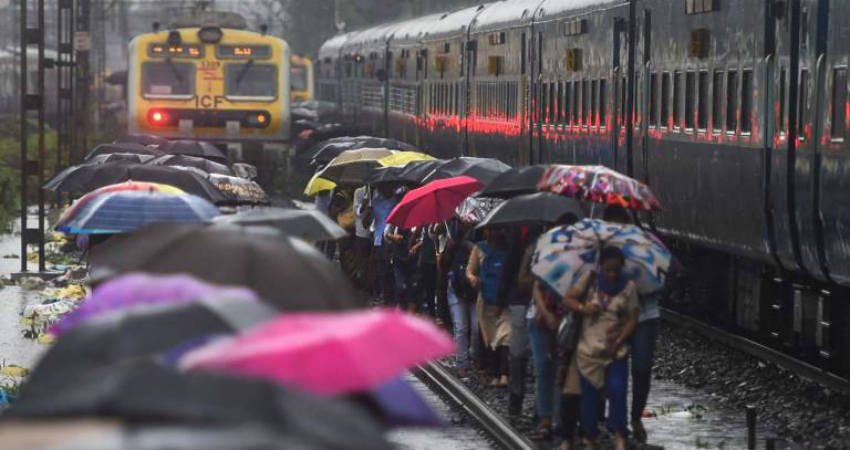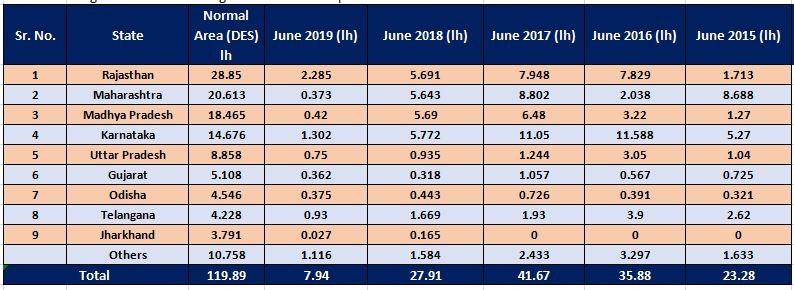
After witnessing vigorous Monsoon conditions for the last one week, the country is now heading towards break Monsoon conditions. During such circumstances, Monsoon goes weak over most parts of the country and heavy rains are only confined to the foothills of Himalayas, right from Uttarakhand to Northeast India. This is exactly how the conditions will be, July 15 onward.
The Low Pressure Area over Uttar Pradesh and adjoining Madhya Pradesh would be fading away soon, resulting in drastic decrease in the rains over central parts of the country. Moreover, the Trough presently passing through the Indo-Gangetic plains would also shift north towards the foothills of Himalayas, leading to increased rain activities along these parts.
Rajasthan, Madhya Pradesh, Chhattisgarh, Odisha, Gujarat, most parts of Maharashtra and entire South Peninsula will witness subdued to scanty Monsoon rains post July 15.
Mumbai rains to weaken by midweek, subdued Monsoon conditions to prevail
Meanwhile, Mumbai that saw a deluge from June 28 to July 2 would now be getting some relief from the incessant showers in the coming days. For the next 2-3 days i.e. until July 10, moderate rains with few heavy spells would continue over Mumbai and suburbs. These heavy rains would stay for 2-3 hours and would not be a continuous affair throughout the day as seen in last few days. However, they would be able to trigger localized flooding and waterlogging in many areas.
Mumbai has already recorded 678 mm of rains in the first eight days of the month of July against the average of 840.7 mm. It is clearly on the path of achieving the remaining target of 163 mm.
Post July 11, Mumbai rains intensity would go down, but isolated intense spells cannot be ruled out. By this time, an Anti-Cyclone is expected to form in the Arabian Sea, due to which the cross-equatorial flow will become weak and northwesterly winds will begin to blow over the region resulting in reduced rainfall activity in Mumbai for almost a week. However, some light to moderate rain of 20–30 mm may be observed in some pockets of the city. This would be a huge relief for the city that has observed heavy rains in the last one week.
Flooding rains likely in East and Northeast India
On the flipside, some of the states in East and Northeast India like Uttar Pradesh, Bihar and Assam should be prepared for heavy to extremely heavy rainy spells this week. There is a serious risk of flooding in Uttar Pradesh, particularly in districts like Rampur, Lakhimpur Kheri, Balrampur, Gonda and Barabanki.
Bihar too is at a risk of flooding rains after July 12. Districts like West Champaran, Gopalganj, Sitamarhi, Madhubani, Khagaria, Madhepura and Supaul should be prepared for any eventuality.
During the same period Assam in Northeast India would also be observing heavy rains, raising fears of flood in the state. Jorhat, Golaghat, Dhemaji, Cachar, Barpeta, Karimganj and Sonitpur would be the worst affected districts. Residents and the government authorities are therefore advised to take precaution.
Poor Monsoon rains in June impact sowing of Pulses severely
The onset Monsoon month of June ended on a poor note in terms of rain across the country. The entire month panned out exactly in the manner that Skymet had forecast. Rains were less and the deficiency kept climbing, and by the end of June, the cumulative shortfall was 33%.
Though some good rainfall was observed during the last week of June, poor rain for the most part of the month seriously affected the farmers as it delayed sowing of some of the crops.
According to the data available with Skymet, sowing of pulses took a blow in June and July as it is down by 72% compared to the previous year. Till July 5, only 7.94 lakh hectares of the area has been sown under pulses against 27.91 lakh hectares covered at the same time last year.
Almost all major pulses growing states have witnessed a sharp decline in sowing due to deficient Monsoon. Maharashtra, with 20.613 lakh hectares of land under the cultivation of pulses - major pulses growing state- has been the worst affected.
So far, sowing in the state has been done on 0.373 lakh hectares of land compared to 5.643 lakh hectares in 2018. Rajasthan is the other most affected state with sowing done on only 2.285 lakh hectares of land against 5.691 lakh hectares done last year. Below is a table that gives a comparative look at the sowing of pulses done in the states in the last five years from June to July 5.

Progressive area coverage under Kharif Crops as on 08.07.2019
Among all Pulses, a major decline in the area has been seen for Tur. Till date, only 0.84 lakh hectares has been sown against 3.69 lakh hectares at the same time last year. Tur sowing starts in the month of June and ends in July. Timely sowing of Tur crop is important as delay in sowing leads to yield loss.
However, there is a forecast for some good rain for one week in some parts of the country. East India would be observing moderate to heavy amounts of rain during this period (July 10-July 16), while Central India has already seen enough of rains till now. Due to this, the sowing of pulses may increase in states like Madhya Pradesh, Gujarat, Rajasthan, Odisha and Uttar Pradesh.
Image Credit: NDTV
Any information taken from here should be credited to skymetweather.com


